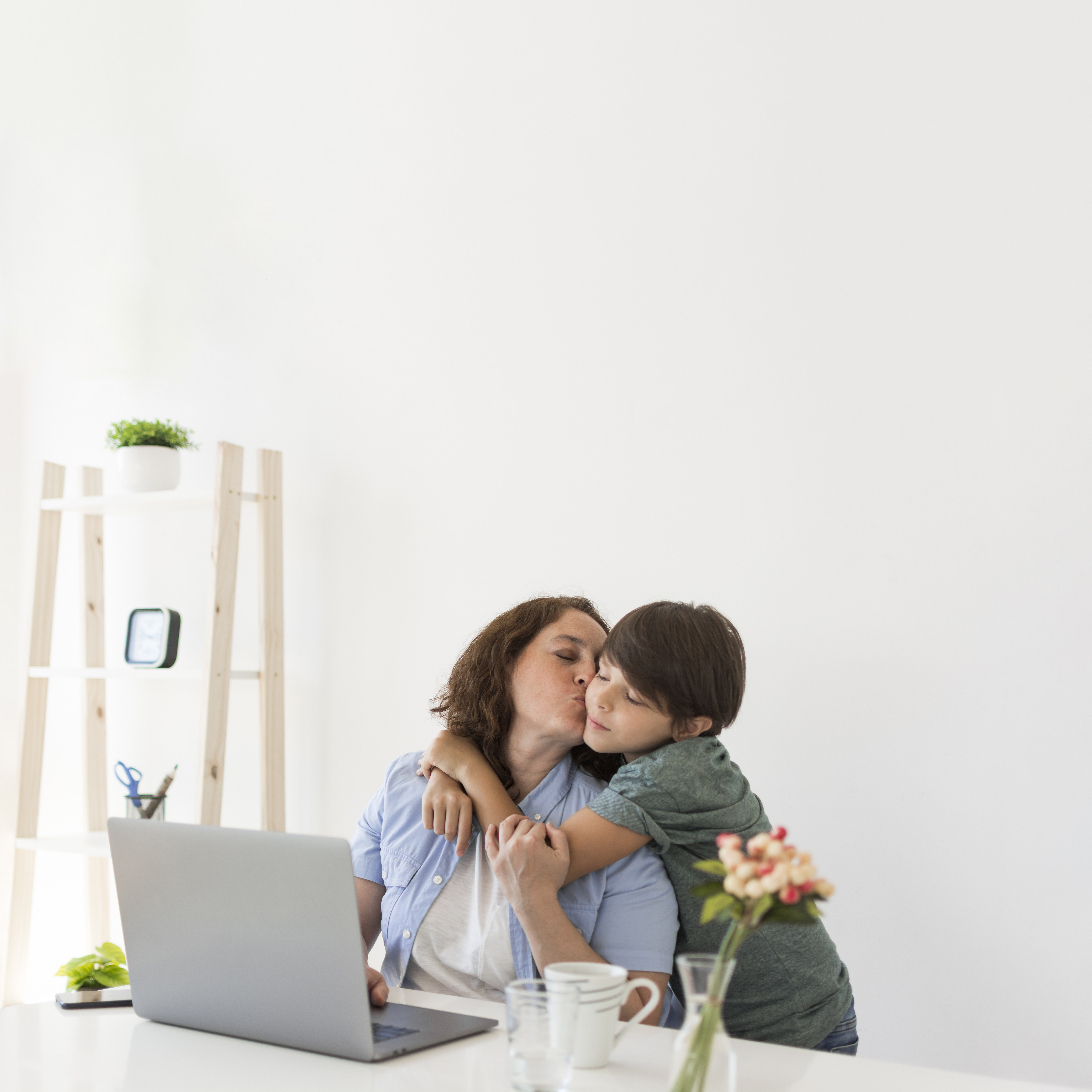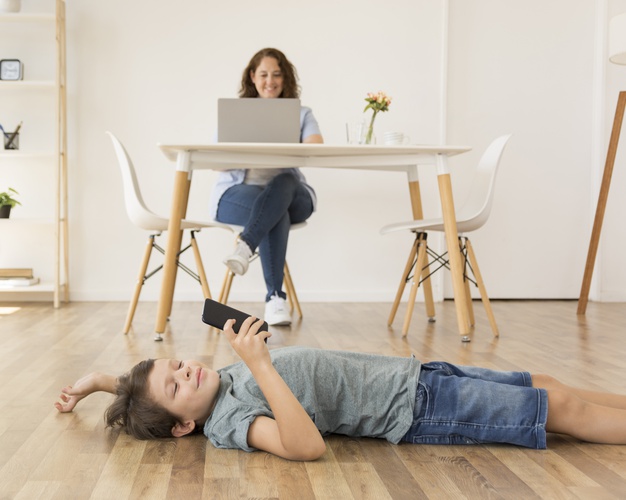WFH in COVID-19 came without warning, suddenly and immediately, leaving no time for preparation. It also means that the perfection, or the lack of it, in managing home, work, kids and everything in between needs a new scale of acceptance. Being agile and pivoting approach means letting go of that tight ship. Simply ensuring that the ship sails to the other side safely, without capsizing, means you’ve done great.
On some occasions, the pure joy of having mom-at-home evaporates at the altar of a shut door. De-escalation strategies are quickly employed. Lollipops are brought in to pre-empt the banging door syndrome, while on some non-critical calls, Anuprita Bhomick’s five year old son gets into the spotlight. Just as Abhilasha Jha’s daughter who peeps in to say hello to her mum’s colleagues. Of this exposure, Priya Khanna believes that mandated work from home will include a warm fill of parent-child moments.
Little kids and a working mother, at home, at the same time means daily schedules have morphed to a blurry mix—from sing-along to strategy, drawing to dialling into a call and playing board games to pricing a new product. The absence of domestic help and closure of childcare facilities have created new demands on the mother.
To manage this balancing act, Abhilasha clocks in work which requires her to concentrate, think or read to overlap with her daughter’s sleep timings. Mealtimes are a joint activity and play dates include exercise to maximise mother-daughter time.
Mother of two boys, seven and nine years, Heather Saville Gupta is greeted with moans when she disappears into another room to take her calls. Though they have quickly understood that despite having mum at home, this time in quarantine isn’t a holiday. The guidelines haven’t changed, where school days and nights are regimentally differentiated from weekend and ‘real’ holidays.
Design-your-day is the new norm in Priya Khanna’s home, where evenings are family-filled with a choice of either board games, movies, cooking or reading challenges. All of this possible as she has established a predetermined schedule.
Whilst in the immediate, COVID-19 is disrupting and tricky, it is that one chance where kids observe mum-at-work. Children have an innate capacity to assimilate and understand what they see and experience. The pandemic gives them the visibility to appreciate and the sensitivity to grasp that their mother plays an additional role, other than that of being their mother. That she has another identity, of a working professional; where mum is a ‘separate’ entity.
A distinct divide between home and work within the confines of the COVID-19 realm is not happening. Not any time soon. However, enforcing clear demarcations of work, home and activities has a positive impact on children, influencing their values towards discipline and a respect for work ethics.
Abhilasha has a poignant insight to share. While drawing boundaries, especially on the non-negotiables, her daughter is learning to understand and respect her schedule. At other times, it is Abhilasha who has to understand and do things her daughter’s way.
And if we thought that it is the younger kids who tug the heartstrings of the mother, Mariko Braswell, is experiencing it differently. While her teens respect her time and love having her around, it doesn’t mean, even mistakenly, more home-cooked food! Though the family time is enjoyable, finding a groove, with everyone at home at all times, is something she is coping with.

Pre-Covid-19, Rachele Focardi’s work permitted her a constructive flexibility, with the kids adapting to her being there one minute and then next her saying, “OK, now I’m out, I need to go to a meeting.” That was normal then. Now, seeing mum at home, all the time, every day, they want her attention. And there just doesn’t seem to be enough time in the day to focus on everyone. Her eldest, all of five and a half, gets it. Her younger daughter is confused. She doesn’t understand why mommy, despite being home, is ignoring her. The hardest to deal with, for Rachele, is her youngest, 11 month-old son, because she feels she is rejecting him. Guilt creeps in.
The pandemic is not only a global tragedy. With no childcare support, it is a personal struggle for many who are juggling their calls with caring for their children. Even though fathers are available and participative, the mother’s contribution plays a huge part in managing WFH.
Women are known to be de facto caregivers. When the mother goes to office, there is a clear distinction of her role. A physical shift in her gear and an organic divide of her responsibilities, a temporary severance from the home occurs until she gets back from the office.
During this pandemic, does being at home automatically mean that the mother becomes the primary caregiver? That the load, mental and real, of managing home and child, automatically becomes hers? The one reset that the pandemic must exercise with the same intensity as its contagiousness is to sanitise gender balance, to provoke equality of roles and expectations.
WFH is being re-defined in times of COVID-19. Corporates will need to pivot their expectation of employees working from home, keeping in mind the cultural aspects and contextual scenarios of their workforce.
While that is brewing over a Zoom call, Rachele reaches out for a book of recipes, belonging to her daughter, that was sitting on the shelf for years. Something that she has never done, it is baking with her children for now. A high engagement family activity guaranteed with yummy outcomes!
(The article is part of a series of perspectives as a result of the Coronavirus lockdown. Also read At Home with Work, Children and All and Why Video is the New Human Connection )


